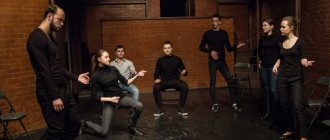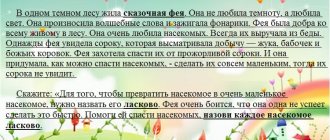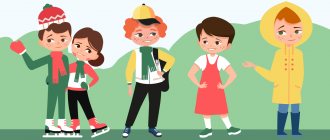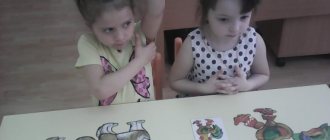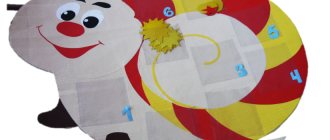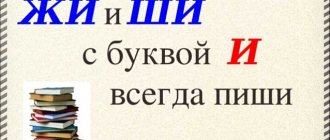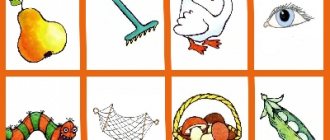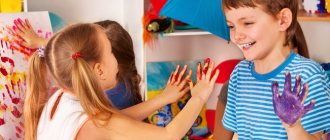How to teach a child to analyze and generalize objects
At the first stage of learning, you don’t have to cut the cards, but study each group of objects with your child separately. Name all the objects, explain on what basis they are combined. After the child remembers all the objects, cut the cards into pieces, choose one central picture, for example toys, and ask the child to assemble the entire group of toys on his own.
Then select any other picture, not necessarily the central one, for example an airplane and ask to collect all the pictures belonging to the transport category. At the first stage, help the baby if he has difficulties. Increase the number of punishments studied gradually, taking into account the child’s age and skills. Conduct classes in a similar way until the child learns to independently assemble all the puzzles and generalize objects.
Using this educational material, you can play educational lotto with one child or with a group of children, for example in kindergarten or at a birthday party.
Considering the number of players, distribute the central puzzle cards equally, and then take out and show the puzzle pieces from the bag or box to the children, the children must correctly name the object and the one who has the central picture from this group of words takes it for himself and begins to assemble the puzzle. The first one to collect all the pictures wins.
Good luck and interesting activities!
Educational game - puzzles "Generalization" for children 2,3,4 years old
Educational game - puzzles "Generalization" for children 2,3,4 years old
Educational game - puzzles "Generalization" for children 2,3,4 years old
Educational game - puzzles "Generalization" for children 2,3,4 years old
Educational game “Generalization” for children 2,3,4 years old
Educational game “Generalization” for children 2,3,4 years old
Educational game “Generalization” for children 2,3,4 years old
Educational game “Generalization” for children 2,3,4 years old
Educational game “Generalization” for children 2,3,4 years old
Educational game “Generalization” for children 2,3,4 years old
Educational game “Generalization” for children 2,3,4 years old
Educational game “Generalization” for children 2,3,4 years old
Educational game “Generalization” for children 2,3,4 years old
Educational game “Generalization” for children 2,3,4 years old
Educational game “Generalization” for children 2,3,4 years old
Educational game “Generalization” for children 2,3,4 years old
Educational game “Generalization” for children 2,3,4 years old
Educational game “Generalization” for children 2,3,4 years old
Educational game “Generalization” for children 2,3,4 years old
Educational game “Generalization” for children 2,3,4 years old
Educational game “Generalization” for children 2,3,4 years old
Educational game “Generalization” for children 2,3,4 years old
Games for classifying objects (with presentation)
Victoria Prokopovich
Games for classifying objects (with presentation)
Classification of objects is the ability to find a common feature of objects, and according to it, combine objects into homogeneous groups. We classify objects according to generalizing words.
At first glance, classification is a boring task. And to make classification interesting, there is, as always, only one way - to turn it into a game! After all, the ability to identify common functional characteristics in a variety of objects will help children in the future to master almost all school wisdom.
1. Combining items.
I invite the children to look carefully at the objects and answer the following questions: What is drawn? What do these items have in common? How to call these items in one word (dishes, toys, vegetables, etc.?
2. “Put the objects into groups.”
I offer children picture cards that can be arranged into groups (for example, flowers, birds, trees). Sometimes I use large colored geometric shapes. This makes it easier and more convenient for children to arrange cards into groups, for example, flowers on a green circle, birds on a blue square, trees on a yellow triangle. At the same time, children themselves choose the basis for their group.
3. “What is common?”
I list several items and ask the guys to say what unites them, how they can be called in one word. For example, “wolf, fox, bear, hare” or “car, tram, trolleybus, bus.”
4. “I know 5 subjects.”.
I play in a group or on the street with a ball or any other toy. Here children are offered a general name, a concept for which they need to name more specific words related to it. For example, “I know 5 names of vegetables: potatoes, onions, carrots, beets, tomatoes.” For the exercise, it is recommended to use the following general concepts: names of girls, names of trees, countries, cities, rivers, fruits, vegetables, products, clothes, shoes, furniture, berries, etc. The game is very dynamic.
5. “Say it in one word.”
The game is the opposite. I name several words, and the child who catches the ball must name them with one common word (“birds, fish, animals,” “berries, trees, flowers”).
6. “What’s extra” (“Fourth extra”, “What doesn’t fit?”).
The game allows you not only to find common and different properties of objects, to compare, but also to combine into groups according to some basic, essential characteristic, and to master the skill of classification. Speech also develops, the child learns to explain and prove his choice.
I invite the child to carefully look at the pictures of objects and answer the questions: What is extra? Why? What is the distinctive feature? How to describe the three remaining items in one word?
7. “Opposite meaning.”
First you need to introduce children to the opposite meaning. For this, a poem will come to the rescue:
I will say a word high, and you will answer (low)
I’ll say far away, and you’ll answer….(close).
I will tell you the word coward, you will answer (brave).
Now I’ll say the beginning, well, answer (the end).
For example, sour -, white -, brave -, black -…. ,end -...., light -, start -, cheerful -...., buy -, bad -, remember -, sad -, big -, high -, top -, stupid -, forget -, good -, wide -, beginning -, day -, sell -… .
8. “Question-answer” (introduction to ancestral relationships).
Children learn which representatives of a species are included within the genus, that the concept of genus is always broader than the concept of “species”. All representatives of any genus have common characteristics inherent only to it, which is why the characteristic and other characteristics are combined into a genus.
I ask questions that confront the generic (trees, shrubs, flowers, fish, birds, berries, vegetables, animals) and species characteristics of objects (birch, oak, rose hips, lilac, crucian carp, pike, crow, dove, raspberry, potato, onion, lion , dog Questions can be structured as follows:
What are more in the forest - trees or pine trees?
What are more in the field - flowers or daisies?
What is more in the garden - shrubs or raspberry bushes?
What is more in the river - fish or pike? Etc.
9. “Fish, birds, animals” or “Berries, flowers, trees” (family relations).
During this game I usually use a ball. I throw a ball to the child and say one of the words (fish, bird, flower, animal, berry, tree, fruit). The child, having caught the ball, names the specific concept to the generic concept, for example, perch fish; falcon bird; animal is a bear. Topics may vary.
10. “Yes - no.”
To begin with, the child will be the leader (the role of the leader is usually very attractive for children). He makes a wish for some object (you can take a card with a picture of this object and hide it). The adult’s task is to guess what is shown on the card. He can ask the presenter any questions about this subject, which can be answered either “yes” or “no”. The dialogue might look like this, for example:
- Is this a living creature? - Yes. - Is this a beast? - No. - Bird? Yes. - City? - Yes. -Big? - No. - Sparrow. -Yes.
Also, for variety, I make presentations like this. I hope that my material will be useful in your work.
See more on the topic of educational games for children:
- Learning colors is an educational game for children, how to learn colors with a child, educational games for preschool children
- Game find a pair for children 2, 3, 4, 5 years old, didactic game find a pair for the development of motor skills, attention, memory
- Professions pictures for children, we tell children about professions, game learning professions part 2
- Children's game about vegetables, do-it-yourself lotto for children “Vegetables and Fruits”
- DIY educational game about animals - lotto “Who Lives Where” for children 2,3,4,5,6 years old
